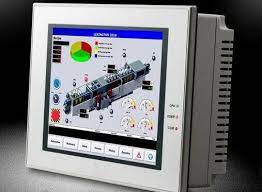Human-Machine Interface (HMI) systems play a crucial role in industrial automation, enabling operators to interact with and control complex machinery and processes. At the heart of these HMI systems are industrial LCD panels, which provide the visual interface for monitoring and managing industrial operations. In this article, we will explore the significant role that industrial LCD panels play in HMI systems and how they contribute to efficient and effective industrial automation.
1. Visual Representation and Feedback
Industrial LCD panels serve as the primary visual representation of critical data and information in HMI systems. These panels display real-time data, including process parameters, system status, alarms, and trends, allowing operators to monitor and evaluate industrial operations at a glance. The high-resolution displays of industrial LCD panels ensure that operators can view detailed information and detect any abnormalities or deviations promptly. The visual feedback provided by these panels enables operators to make informed decisions and take appropriate actions to optimize industrial processes.
2. Intuitive User Interaction
Industrial LCD panels incorporate touchscreen technology, providing an intuitive and user-friendly interaction between operators and the HMI system. Operators can navigate through menus, control parameters, and execute commands directly on the touchscreen display, eliminating the need for external input devices. The touchscreen functionality of industrial LCD panels simplifies the operation of complex machinery and processes, reducing the learning curve for operators and enhancing overall system usability. This intuitive user interaction enables operators to respond quickly to changing conditions and maintain precise control over industrial operations.
3. Customization and Flexibility
Industrial LCD panels offer customization options that allow operators to tailor the HMI system to their specific needs. These panels support the display of a wide range of data types, including numerical values, graphs, charts, and images. Operators can configure the layout and design of the display screens to present information in a clear and organized manner. The flexibility of industrial LCD panels allows for the creation of user-friendly interfaces that align with the operational requirements of different industrial processes. Customizable HMI systems enable operators to access the most relevant information efficiently, improving overall system efficiency.
4. Real-Time Monitoring and Alarm Systems
Industrial LCD panels enable real-time monitoring of industrial processes and systems. The panels can display critical parameters, such as temperature, pressure, flow rate, and production data, in real-time. Operators can monitor these parameters continuously and identify any deviations or anomalies promptly. Industrial LCD panels also incorporate alarm systems that generate visual alerts and notifications when predefined thresholds or conditions are met. The real-time monitoring and alarm capabilities of industrial LCD panels ensure that operators can respond swiftly to any issues or abnormal situations, minimizing downtime and improving system reliability.
5. Remote Monitoring and Control
With the integration of networking capabilities, industrial LCD panels enable remote monitoring and control of industrial processes. Operators can access the HMI system from remote locations using secure connections. This remote accessibility allows for real-time monitoring, data analysis, and system control, even when operators are not physically present on the shop floor. Industrial LCD panels provide a centralized interface for remote operators to oversee multiple industrial processes and make informed decisions. Remote monitoring and control capabilities enhance operational efficiency, facilitate troubleshooting, and reduce response time to critical events.
6. Durability and Reliability
Industrial LCD panels are designed to withstand the harsh conditions of industrial environments. These panels are constructed with rugged materials, ensuring durability and resistance to dust, moisture, vibrations, and temperature variations. Industrial LCD panels are built to operate reliably 24/7, offering long-term performance and reducing the risk of system failures. The robustness and reliability of industrial LCD panels contribute to the overall stability and uninterrupted operation of HMI systems in demanding industrial settings.
Conclusion
Industrial LCD panels play a vital role in HMI systems, providing a visual interface for operators to interact with and monitor industrial processes. These panels offer visual representation, intuitive user interaction, customization, real-time monitoring, and alarm systems, remote monitoring and control, and durability and reliability. By incorporating industrial LCD panels into HMI systems, industrial operators can achieve enhanced efficiency, improved productivity, and optimized control over industrial processes. The seamless integration of industrial LCD panels empowers operators to make informed decisions, respond promptly to critical events, and maintain the highest levels of system performance in the realm of industrial automation.
